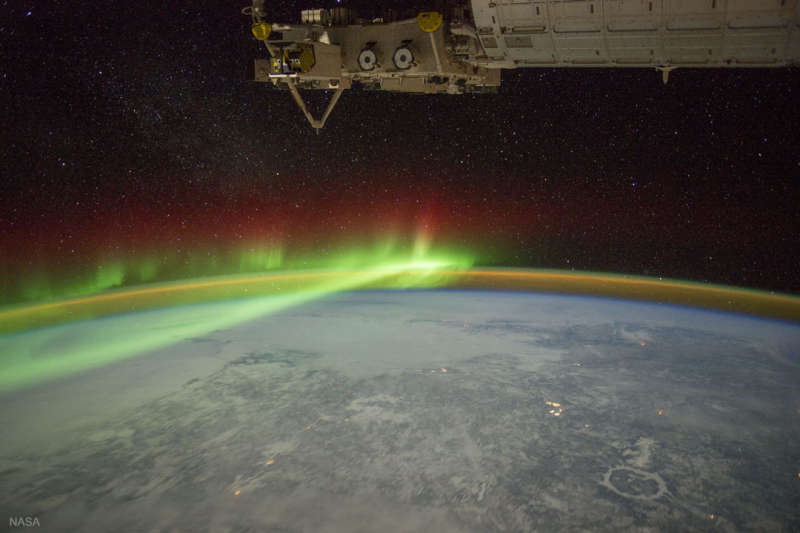Credit & Copyright: NASA
Explanation:
How many of these can you find in today's featured photograph: an aurora, airglow,
one of the oldest impact craters on the Earth, snow and ice, stars, city lights,
and part of the International Space Station?
Most of these can be identified by their distinctive colors.
The aurora
here appears
green
at the bottom, red at the top,
and is visible across the left of image.
Airglow appears orange and can be seen hovering over the
curve of the Earth.
The circular Manicouagan Crater in
Canada, about 100 kilometers across
and 200 million years old, is visible toward the lower right and is covered in white
snow and ice.
Stars,
light in color, dot the
dark background of space.
City lights appear a bright yellow and dot the landscape.
Finally, across the top, part of the
International Space Station (ISS) appears mostly tan.
The
featured image was taken from the
ISS in 2012.
1999 2000 2001 2002 2003 2004 2005 2006 2007 2008 2009 2010 2011 2012 2013 2014 2015 2016 2017 2018 2019 2020 2021 2022 2023 2024 2025 |
Yanvar' Fevral' Mart Aprel' Mai Iyun' Iyul' Avgust Sentyabr' Oktyabr' Noyabr' Dekabr' |
NASA Web Site Statements, Warnings, and Disclaimers
NASA Official: Jay Norris. Specific rights apply.
A service of: LHEA at NASA / GSFC
& Michigan Tech. U.
|
Publikacii s klyuchevymi slovami:
aurora - polyarnoe siyanie - krater Manikuagan - Manicouagan crater
Publikacii so slovami: aurora - polyarnoe siyanie - krater Manikuagan - Manicouagan crater | |
Sm. takzhe:
Vse publikacii na tu zhe temu >> | |
